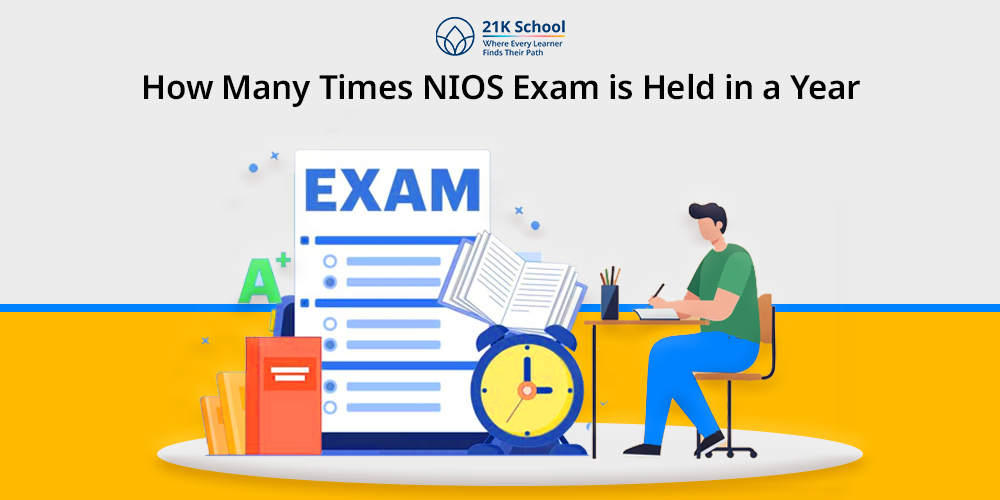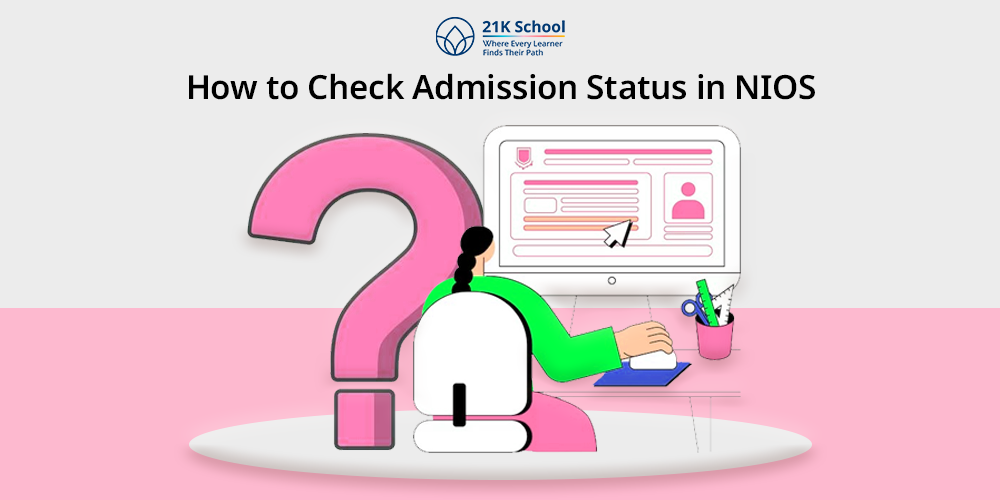
If you’re a student, teacher, or parent navigating the journey of GCSE exams, you’ve probably come across the term “grade boundaries” more than once.
But what do they really mean, and why are they so important?
The difference between one grade and another can sometimes come down to just a single mark, which seems insignificant but is definitely not—and that’s where understanding grade boundaries becomes a game changer, for a learners life and it promotes an understanding of being self aware.
Nowadays the GCSE curriculum/ online course is offered in India via online support.
And also help in navigating through GCSE exams can be challenging, and understanding the basic or the core concept of grade boundaries is essential for both students and educators, in some cases it even involves parents.
Table of Contents
- What Are GCSE Grade Boundaries?
- The 9-1 Grading Scale Explained
- How Are Grade Boundaries Set?
- Who Determines GCSE Grade Boundaries?
- So, Why Do GCSE Grade Boundaries Matter?
- Practical Implications of Grade Boundaries
- Strategies for Students to Achieve Target Grades
- Tips for Navigating GCSE Grade Boundaries
- Conclusion
What Are GCSE Grade Boundaries?
Grade boundaries refers to the minimum marks that is required for achieving a grade in a GCSE curriculum, the boundaries are the road map to definite translation of marks, making them convenient and easy to understand.
The main unit of any grading system is the board that governs it.
In this case for GCSE grading the responsible exam boards are AQA, Edexcel (Pearson), OCR, and WJEC, which are mostly dominant in the UK.
These are responsible for designing exams and setting grade boundaries for the curriculum.
Although different boards may have slight variations in how grade thresholds are determined, the basic core structure remains the same for each.
Also, GCSE as a curriculum is often confused with curriculum like GCSE and IGCSE or even with IB.
The 9-1 Grading Scale Explained
The GCSE grading system was updated to a numerical scale over the traditional alphabetic scoring, to better differentiate student performance starting from Grade 9 being exceptional performance,which is equivalent to conventional A* grade.
There’s also Grade 4 which is equivalent to a low C or a standard pass, when we consider a situation where academically there’s even grade 1 which is roughly equivalent to the bottom of grade G in the old system (if it ever existed).
This scale allows more precise identification of student capabilities.
GCSE 9-1 Grading Scale Table
| Grade | Description | Equivalent in Old System | Key Insights |
| 9 | Exceptional performance | Above A* | Top 2-3% of students achieve this grade. |
| 8 | High performance | A* | Reflects strong subject mastery. |
| 7 | Secure performance | A | Indicates a solid understanding of the subject. |
| 6 | Competent performance | High B | Shows above-average skills and knowledge. |
| 5 | Strong pass | Low B / High C | Minimum benchmark for many college courses. |
| 4 | Standard pass | Low C | Considered a basic pass in the UK education system. |
| 3 | Below standard pass | D / High E | Indicates need for improvement in understanding. |
| 2 | Limited performance | Low E / High F | Shows minimal comprehension of the subject matter. |
| 1 | Very limited performance | G | Reflects significant gaps in knowledge and skills. |
| U | Ungraded / Fail | U | No sufficient marks to meet grade 1 requirements. |
How Are Grade Boundaries Set?
Grade boundaries are determined after exams are marked, based on factors such as Overall student performance which ensures fairness for the cohort, Exam difficulty which also determines uniformity of difficulty, often done by adjusting for particularly challenging or easier papers.
They are also set by Statistical analysis with which the results are compared and the consistency is maintained in the academic year, as compared to previous year.
But the real question is
Who Determines GCSE Grade Boundaries?
The answer is supposedly very obvious — The Exam boards
But they don’t take care of it independently, they work in collaboration with independent regulators such as Ofqual, to set grade boundaries.
It is a transparent process and the fairness of the course is maintained across the country, uniformly.
Now when the grades are set by authority it is equally important to understand the Impact of Grade Boundaries on Students.
Grade boundaries influence a students performance and help in decision making for the future. With better understanding of grades, students tend to perceive their performance and improve on the basis of their grades.
With clear understanding of grade boundaries students target a specific grade and manage their expectation and hard work, to make calculative and result.
So, Why Do GCSE Grade Boundaries Matter?
Grade boundaries matter to students because it helps them in setting expectations and realistic yet achievable goals, and also when tracked and monitored regularly it helps them identify the area of improvement.
In the case of teachers, grade boundaries help them in planning the academic year more strategically and targeted towards children well-being, also the strategies help them in supporting individual learners’ reports and being a helping hand in the course of academic fulfilment.
Similarly, when parents understand the need for grade boundaries, they are more aware of their kids’ performance and can support their child more effectively.
There has been no clear understanding of the grade boundaries’ existence but it has some major impact on people’s lives.
Also there are some :
Practical Implications of Grade Boundaries
As it impacts the further education enrollment plans impacting college admissions. As they translate into grades, they bring in opportunities for scholarship and career advancement as discussed and critically analysed.
Awareness regarding the grading system can motivate students to always aim for better and aim higher achievements keeping a track of their results and taking every feedback constructively.
Strategies for Students to Achieve Target Grades
1. Understand the syllabus
What should learners do: Familiarize themselves with what’s expected in each subject.
What impact it will have: Knowing the syllabus helps focus your efforts and ensures you don’t miss key topics.
2. Focus on weak areas
Action: Learners can actually take an extra step and Identify and work on challenging topics.
Impact: Learners can look for Addressing weaknesses that can significantly improve your overall performance.
3. Practice with past papers
Action: Get used to exam patterns and timing and aim for a better result than your own last grade. One can refer to the article already published for Accessing GCSE Past Papers for Exam Success.
Impact: This helps in building confidence and improves time management during the actual exams.
4. Seek support
Action: In this case Students can collaborate with teachers, peers, or tutors for extra support over their teachings and guidance.
How will this impact learners: This guidance from others can offer new perspectives to students to relate and understand, it also promotes effective study techniques for them, which will ultimately help them grow and succeed in life, from future planning to career development to college selection; awareness does it all for you.
There are many ways to navigate through the understanding of GCSE grade boundaries, the learners are suggested to stay updated with the trends of the board and keep an eye on the notice published by them.
It is equally important to track and keep reviewing their exam board results as it changes, every year based on the competitive strength and exam difficulty level.
With time students tend to panic especially during the exams, and as they move ahead and their anxiety keeps fluctuating every now and then, for a stable learning journey and understanding, boundaries are to be maintained with patience — so, don’t panic.
Aim for higher values, if not for the moon — you’ll at least land on stars. So,always strive for value ahead of the boundary to secure your target grade.
It gives a sense of satisfaction when you get something you always desired for but in most cases people are habituated to under prepare in confidence, so in such cases shooting or aiming for a higher value can be a game changer.
And always — have a smart plan of analysing how answers are graded; as self reflections help in reviewing marking schemes better.
Nobody knows things better than a keen observer and a good listener, so it is very critical to analyse the trend of grading and the pattern on which the answers are marked — although it keeps fluctuating every year.
Conclusion
GCSE grade boundaries are essential to the exam system.
It’s very important for students as it influences their performance and also has subsequent impact on their future progress.
As learners get to know more about the boundary they start understanding the boundaries as they adopt effective strategies to maximise results.
With proper understanding of things around them in their curriculum, students tend to understand and analyse their potential, and maximise it. It also helps them in achieving desired goals



